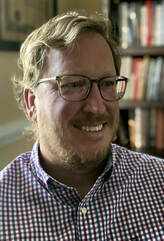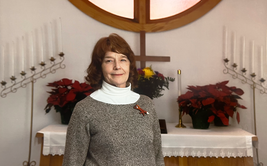
A: The first time I experienced an Ethiopian buna ceremony was about twenty years ago in Jerusalem, at the home of an elderly Ethiopian woman named Muchit. She soon became my adopted “grandmother,” and I found my place as an adopted aunt in her extended family! Today, she is 103 years old, and with the help of her daughter, still serves buna twice a day!
Because I am a coffee lover, I was fascinated to see the Ethiopian coffee prepared right in front of me. I was also impressed by the spirit of this ancient tradition–connecting people in an atmosphere of love and acceptance.
Q: Many authors are so afraid of depicting another culture inaccurately in their work that they hesitate to even try. Can you give a few examples of the steps you took to ensure you depicted Almaz, her family, and the buna bash itself in an authentic, respectful, and empowering light?
A: By the time I wrote The Big Buna Bash, I had already participated in a lot of buna ceremonies, so keeping [the work] authentic was not difficult. I had the most trouble putting myself into Almaz’s shoes. How would she feel? How could I empower her to show other kids that what makes them different can also make them unique and interesting?
Keeping the book’s illustrations authentic was my obsession, and I’m thankful that my dear illustrator Roberta Malasomma was with me all the way. Later, I discovered that she had an Ethiopian sister-in-law!
Q: You recently launched your nonprofit, ReadingMatters Ethiopia, which will print and ship books to the capital of Ethiopia, Addis Ababa. What are your broader goals for your new organization, and how can readers help out?
A: Due to the patience and goodwill of Robert Pruett and the Brandylane staff, The Big Buna Bash was recently printed in Amharic. Next, I had to decide what to do with it!
The original English version had opened many doors for me, so I decided it was time to give back. ReadingMatters Ethiopia is a project devoted to helping develop mother-tongue Amharic reading skills in the children of Addis Ababa, Ethiopia, by distributing free Amharic copies of The Big Buna Bash to needy students and organizations that work with impoverished kids.
Ethiopian children want to read, but don’t have easy access to books—especially books with beautiful, colorful illustrations. In Ethiopia, libraries are few and limited to school campuses. These libraries are filled with textbooks, but storybooks are rare. As the general director of the Ethiopian National Library, Yikunnoamlak Mezgebu, recently wrote to me: “We desperately need children’s books with Ethiopian context and good illustrations.” The Big Buna Bash has both!
I was fortunate to obtain fiscal sponsorship from Humanitarian Social Innovations in Bethlehem, Pennsylvania. They are an organization that provides support and resources to social entrepreneurs, enabling them to create programs that have a positive impact on communities—which allows projects like ReadingMatters Ethiopia to have nonprofit status.
We are currently relying on donations to print and ship the books to Ethiopia (and I’m also in the process of applying for grants). Less than one dollar will print one book for one needy child! If you are interested in contributing, please contact [email protected] or visit ReadingMatters Ethiopia - Humanitarian Social Innovations.



 RSS Feed
RSS Feed